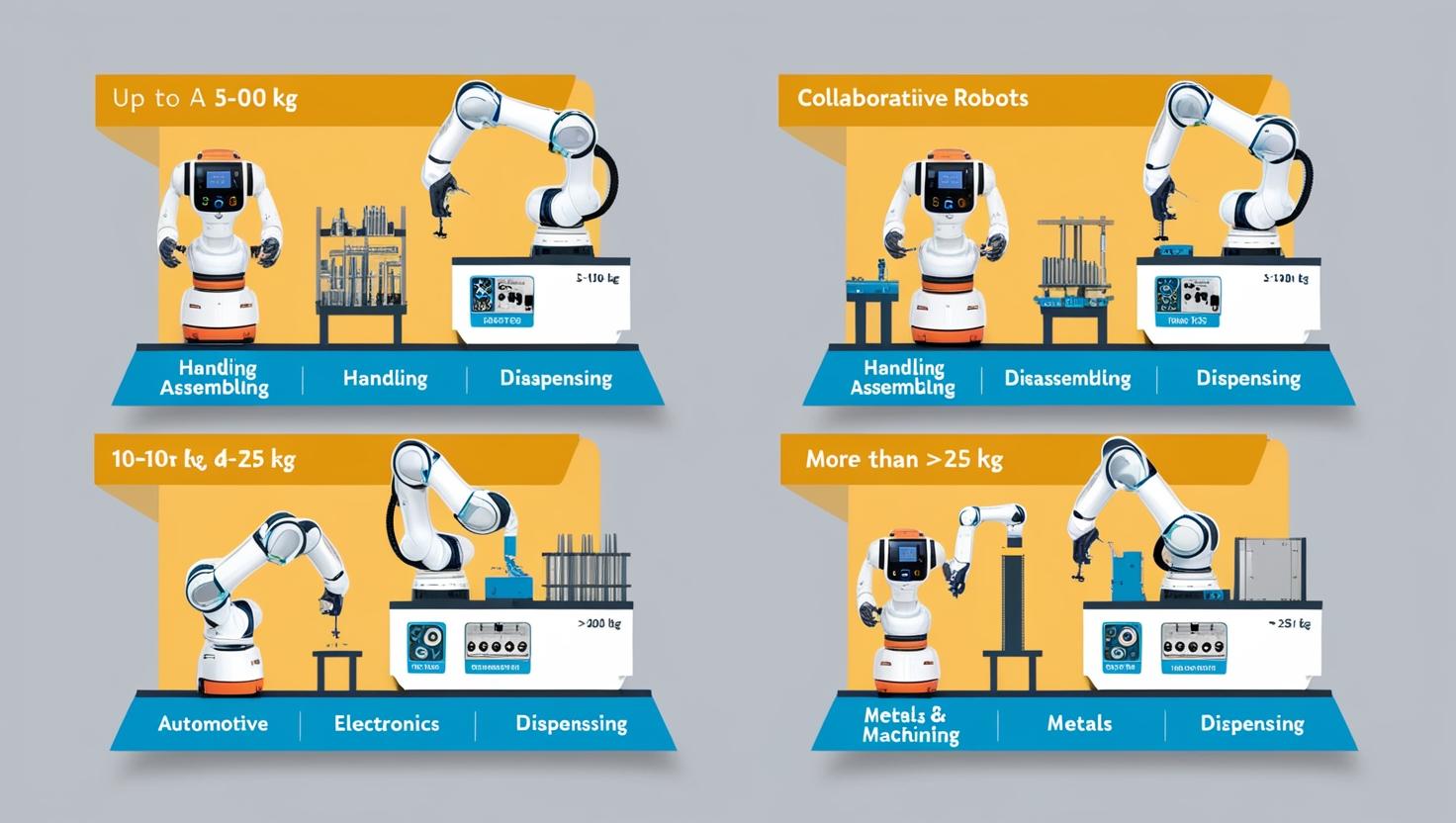The global collaborative robots (cobots) market is experiencing a powerful surge as companies across industries seek to blend human skill with robotic precision. These robots—designed to work safely alongside humans—are rapidly becoming essential tools in manufacturing, logistics, healthcare, and even service sectors. Fueled by growing labor shortages, rising automation demand, and advancements in sensor and vision technologies, collaborative robots are redefining the future of work and attracting significant global investments.
Workforce Transformation Fuels Adoption
One of the core drivers behind the cobot market’s expansion is the workforce automation boom. As industries face skilled labor shortages, especially in developed economies, collaborative robots are increasingly used to perform repetitive, dangerous, or precision-based tasks. Unlike traditional industrial robots that require safety cages, cobots are built to operate in shared spaces, opening up automation to small and medium-sized enterprises (SMEs) that were previously priced out of robot deployment.
Their flexibility and ease of programming also mean they can be quickly re-deployed across tasks—from assembly and material handling to quality inspection and packaging—making them valuable in dynamic manufacturing environments.
Download PDF Brochure @ https://www.marketsandmarkets.com/pdfdownloadNew.asp?id=194541294

Investment Momentum Across Regions
North America and Europe continue to lead in cobot adoption, but Asia-Pacific is rapidly catching up, with China, South Korea, and Japan showing strong momentum due to increasing automation in automotive, electronics, and consumer goods manufacturing. Government initiatives supporting smart factories and Industry 4.0 adoption have further catalyzed regional investments.
Global investors are eyeing the cobot market as a lucrative long-term bet. Venture capital and strategic funding are flowing into cobot startups and sensor manufacturers, particularly those focused on lightweight designs, AI-driven controls, and human-robot collaboration intelligence.
Manufacturing and Logistics Lead Use Cases
Collaborative robots are especially prevalent in automotive, electronics, logistics, and food & beverage industries. They are used for tasks such as precision welding, parts assembly, pick-and-place operations, and palletizing. In logistics and e-commerce, cobots are helping reduce fulfillment times and increase warehouse safety and efficiency.
As the e-commerce boom continues, logistics providers are looking to cobots to alleviate labor pressure during peak demand periods, adding further tailwinds to the market’s growth.
Technology Evolution Expands Possibilities
The cobot ecosystem is evolving rapidly. Integration with advanced machine vision, force control sensors, and natural language processing (NLP) is making cobots smarter and more intuitive to work with. Low-code and no-code programming platforms are reducing the barriers to adoption for non-specialists, allowing employees to program robots through drag-and-drop interfaces or simple demonstrations.
These advancements are turning cobots into collaborative teammates rather than just tools—enabling them to adapt to changes in workflows and assist human workers with greater precision and efficiency.
A Market Poised for Long-Term Growth
The global collaborative robot industry is projected to grow from USD 1.42 billion in 2025 to USD 3.38 billion by 2030, at a CAGR of 18.9%. With expanding applications in healthcare (such as rehabilitation support and surgical assistance), agriculture, and retail, the cobot market is on track to become a cornerstone of the next generation of automation technologies.
As global industries push toward more resilient, human-centric automation, collaborative robots stand out as a scalable, cost-effective, and safe solution—earning them a central place in both innovation roadmaps and investor portfolios.
FAQs: Collaborative Robots Market
Q1: What are collaborative robots (cobots)?
A: Collaborative robots, or cobots, are robots designed to work safely alongside human workers in shared workspaces. Unlike traditional industrial robots that operate in isolation, cobots have built-in safety features such as force-limiting sensors and vision systems, allowing them to interact directly with people.
Q2: What industries are driving demand for cobots?
A: Cobots are widely adopted in automotive, electronics, logistics, manufacturing, food & beverage, and healthcare. They are commonly used for tasks such as assembly, material handling, packaging, palletizing, quality inspection, and machine tending.
Q3: Why is the cobot market growing so fast?
A: The market is growing due to a mix of factors: labor shortages, increasing demand for automation, flexible deployment, and lower costs compared to traditional robots. Cobots are particularly attractive to small and medium-sized enterprises (SMEs) for their ease of use and quick ROI.
Q4: How safe are cobots for human interaction?
A: Cobots are designed with advanced safety features, including force-limited joints, collision detection, and vision systems. These features allow them to stop operation instantly when contact with a human is detected, making them safe for direct interaction.
